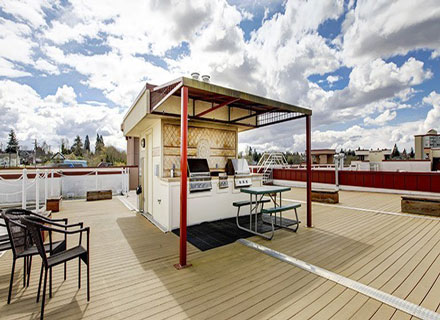Tax Depreciation and Units – It’s all about common property

As Quantity Surveyors, we’re often telling investors that there are more depreciation deductions available within a unit, than a house of similar age and finish. Of course depreciation is just one part of property investment, and shouldn’t be the driving reason to choose one investment over another, but I wanted to look at why a unit returns more depreciation deductions.
Residential units tend to be constructed to a more compact floor plan or layout, rather than the larger open spaces property investors would expect to see within a residential dwelling or house. The cost to build per square metre increases with a compact construction layout, due to more infrastructure (walls, services, etc) and less open spaces than commonly seen within houses. This can make a significant difference to the overall claim, but is not the major reason why residential units will return greater deductions.
In short, the answer is that it’s all about common property.
Most investors are aware that they can claim deductions on the building structure of their unit (subject to age) and the plant & equipment items within such as blinds, carpets, ovens, range hoods and the like. However, many investors aren’t aware that they can claim deductions on the common areas as well. Unit developments are all different, but generally the more units there are within a development, the more common property there is likely to be. Common property includes things like;
- Basements
- Entry Foyers
- Foyers & Corridors on each level
- BBQ and pool areas
- Driveways
Now that’s just the building components. You’ve also got the associated plant & equipment items. The list is far more expansive, but some of the more common items include;
- Air Conditioning
- Automatic Gate Motors & Controls
- Barbecue Assets
- Carpet
- Door Closers
- Emergency Warning and Intercommunication Systems (EWIS)
- Fire Control Assets
- Fire Extinguishers & Hoses
- Furniture, Freestanding
- Garbage Compacting Systems
- Garden Watering Installations
- Generators
- Gym Assets – Cardio & Resistance
- Hot Water Systems
- Intercom System Assets
- Lifts
- Lights
- Master Antenna Television Assets (MATV)
- Security and Monitoring Assets
- Swimming Pool Chlorinators
- Ventilation Fans
This is just a sample of some of the plant & equipment items you might find in a unit development. But how are investors entitled to claim deductions on common property and how does it work? It’s now all about the strata plan.
When you purchase a unit, you’re purchasing a particular lot within a strata plan. A strata plan (SP) shows the building on the land, the lots making up the plan and the common property. Each lot is given a unit entitlement which is shown on the strata plan. The amount of the unit entitlement varies depending on a number of factors such as the size of the lot. Unit entitlements regulate what proportion of the total annual budgeted levies will be paid by each lot owner. Unit entitlements also can regulate voting strength at meetings if the value of the votes is required. Unit entitlements also provide the entitlement that the owner has to claim over the common areas. For example, if there 50 units within a strata plan, the unit entitlement might be something like 1/50. Using this ratio of 1:50, let’s consider the potential depreciation deductions in this case study.
The total common area written down value is estimated to be $3,500,000. The total estimated value of common plant and equipment items is $68,000.
The calculation for the building structure in the first full year is $3,500,000 X 2.5% X (1/50). This results in $1,750 per year worth of deductions on the common building(s).
Plant and equipment items all deprecate at different percentages but will normally be somewhere around 20% on average. So using this as an example, the calculation would be; $68,000 X 20% X (1/50), which equates to $272 in the first full year.
Adding the plant & equipment to the depreciation on the building gives us a figure of $2,022 in a single year on JUST the common areas.
This calculation also ignores some of the legislation that enables you to maximise the depreciation on plant & equipment items such as the ability to claim 100% of the value of all assets under $300 in total, within the year of acquisition. The extra value that common property depreciation deductions add to the overall claim can be significant, and investors should ensure that they’re claiming deductions on every asset that they’re entitled to claim over. Whilst high-rise unit developments will return the most common property deductions, even strata titled villa’s with a shared drive way and perhaps some solar garden lights will attract deductions on the common areas. Be sure to contact a tax depreciation Quantity Surveyor for more information on how to maximise your claim on common areas.
